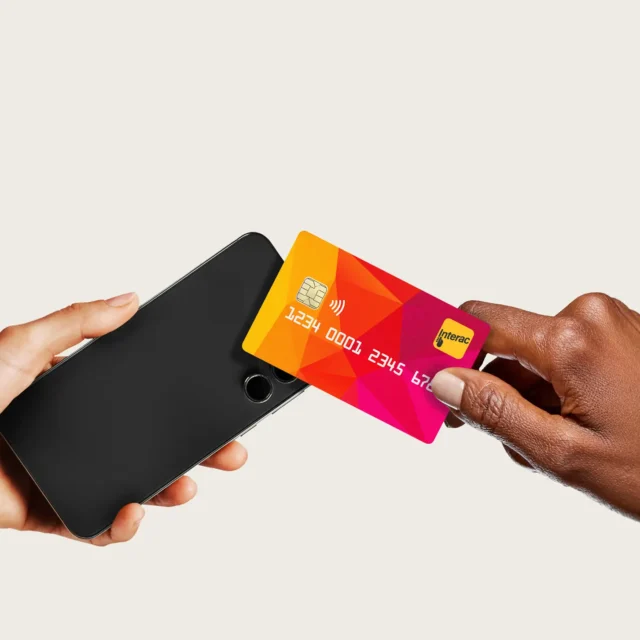The COVID-19 pandemic has forced massive change on everyone, not least the food retail and restaurant industries. They had to adapt quickly to bring food to a Canadian population that was largely housebound. How did they pull it off?
By acknowledging that we now live in a digital economy, where catering to rapidly evolving consumer behaviour means offering a choice of digital payments. That in turn means adopting and embracing up-to-date restaurant payment technologies, omnichannel checkout experiences, e-commerce platforms, and delivery apps.
That’s how the food business is weathering the storm, according to the people who have been making the digital shift happen behind the scenes. For the Collision Conference 2021, Interac convened a roundtable of food and restaurant industry players to talk about how the pandemic accelerated the shift to deliveries and digital payments.
The panellists:
- Mathieu Robitaille, Marketing Director, Metro Ontario and Pharmacies
- Ryan Freeman, Head of Enterprise Partnerships at DoorDash Canada
- Jonathan Defoy, founder & CEO of FoodHero
- Mamata Krishnamurthy, Senior Manager, Digital Payments, Interac
- James Good, AVP, Partnerships, Interac
Here are seven big takeaways from their discussion.
1. “The pandemic increased the pace of the shift to digital”
— James Good, Interac
Since early in the pandemic, Interac data has shown a major shift in consumer behaviour toward digital payments.
For example, said Mamata Krishnamurthy, “We’ve seen over the past year almost a triple-digit growth in our e-commerce business” — referring to a 308 per cent year-over-year jump in sales volume for in-app and in-browser Interac Debit payments. (March 2020 vs March 2021).
And as Interac has reported before, “Much of that growth comes from the food and restaurant industry,” she said. “Both merchants and the consumers want to remain safe, but they still want to have the convenience of being able to shop online.”
2. “Overnight, grocers became essential. That comes with heavy expectations.”
— Mathieu Robitaille, Metro
Mathieu Robitaille recalled the heavy moments of the early pandemic, when he and his colleagues at Metro realized that they had to adapt quickly to potentially help millions of people get food and medicine. (Metro is a major chain of grocery stores in Ontario and Quebec; the company also operates Jean Coutu pharmacies and Food Basics stores, among other brands.)
“We had a responsibility to help customers make the transition to digital shopping and payments, to make it easy,” Mathieu said.
There was also an obvious need to adapt quickly. “We did not have the luxury to wait to make decisions based on what we knew. So we made the best out of what we could and made some expensive mistakes along the way — but there’s always time and a place to fix those mistakes.”
3. “Remove friction everywhere you can in your customer experience”
— Jonathan Defoy, FoodHero
One of the ways to meet that heavy responsibility is to make digital payments as seamless as possible, noted Jonathan Defoy. The FoodHero platform allows grocery stores to list marked-down food, creating a win-win for customers (who get a discount) and retailers (who reduce waste).
While the companies represented on the panel all have easy-to-use digital platforms to access their services, the panellists talked about how there are some customers who still need extra help adapting to life in the pandemic — particularly older customers.
Mathieu said Metro created a phone service for older customers and others who can’t or don’t go online to call in their orders for pickup. The lesson, he said, was that there’s value in “combining old technology with new technology, combining the phone with the website.”
4. “The customer is the channel”
— Mamata Krishnamurthy, Interac
Coming up with ways to cater to all customers is the essence of retailing in the 2020s, and not just in the grocery and restaurant sectors. As Mamata explained, “It matters that you’re able to meet your customer where they are, and this doesn’t only apply to the younger generations.”
Some call this an “omnichannel” approach, but what that really means is “the customer is the channel,” Mamata said. It’s essential to offer customers as many choices as possible for ways to interact and pay so that everyone’s needs are catered to. The pandemic only underscored that piece of wisdom. “We realized we have to be there where the customer is.”
What this meant in practice for FoodHero was giving customers the choice to pay by debit in-app, in part because it reaches more Canadians than any other digital form of payment.
“We added new payment methods. Interac Debit through digital wallets was an immediate win. It increased our sales by 10 per cent,” Jonathan said.
5. “The [restaurant] industry has been remarkably innovative”
— Ryan Freeman, DoorDash
Ryan Freeman said DoorDash Canada has been impressed and inspired to see restaurants innovate so drastically over the past year. Not only have many restaurants shifted to a mostly takeout- and delivery-based model — sometimes overnight — but they’ve introduced new products and concepts like make-at-home meal kits or creating “virtual restaurants”, sometimes using so-called “ghost” and “cloud” kitchens, to better suit their evolving, individual circumstances and objectives.
“The industry has been remarkably innovative, and it’s been pretty incredible to watch,” Ryan said, “especially because these businesses have been under such immense pressure over the last year. Pressure that, by the way, is still ongoing at this very moment with about half the country still under strict lockdown.”
6. “Cash flow is still king, especially for small businesses”
— Jonathan Defoy, FoodHero
Particularly because they’re dealing with the need to innovate over the medium- to long-term as well as the continuing day-to-day pressures of the pandemic, every player in the food business faces financial pressures.
Cash flow is still king, as Jonathan told Collision. So it’s especially great for merchants if consumers use debit as their method of payment in a digital wallet. Not only are the fees low, but with debit there are no chargebacks.
7. “The crisis you have to worry about the most is the one you don’t see coming”
— James Good, Interac
James Good acknowledged that while the shift to digital wasn’t unexpected, the pandemic caught everyone off guard and forced businesses of all sizes to accelerate plans and invent new tactics. “Effectively what happened is we’ve been pushed into the deep end of the pool,” he said.
“This made things move 10 times faster than we had expected,” added James, who was happy that Interac could help merchants across a number of sectors that were deemed essential.
“They wanted to know how else we can help … be that through some data insights, through co-marketing initiatives, or by better understanding how our product and innovation roadmaps line up against what they need to deliver to their customers now and in the short term,” he said.
In other words, Interac has deepened its relationships with essential players in the Canadian economy to help them survive and adapt to a challenging time.
“We’ve pivoted by increasing our partnership efforts with merchants,” he said, “to help them weather the storm.”



